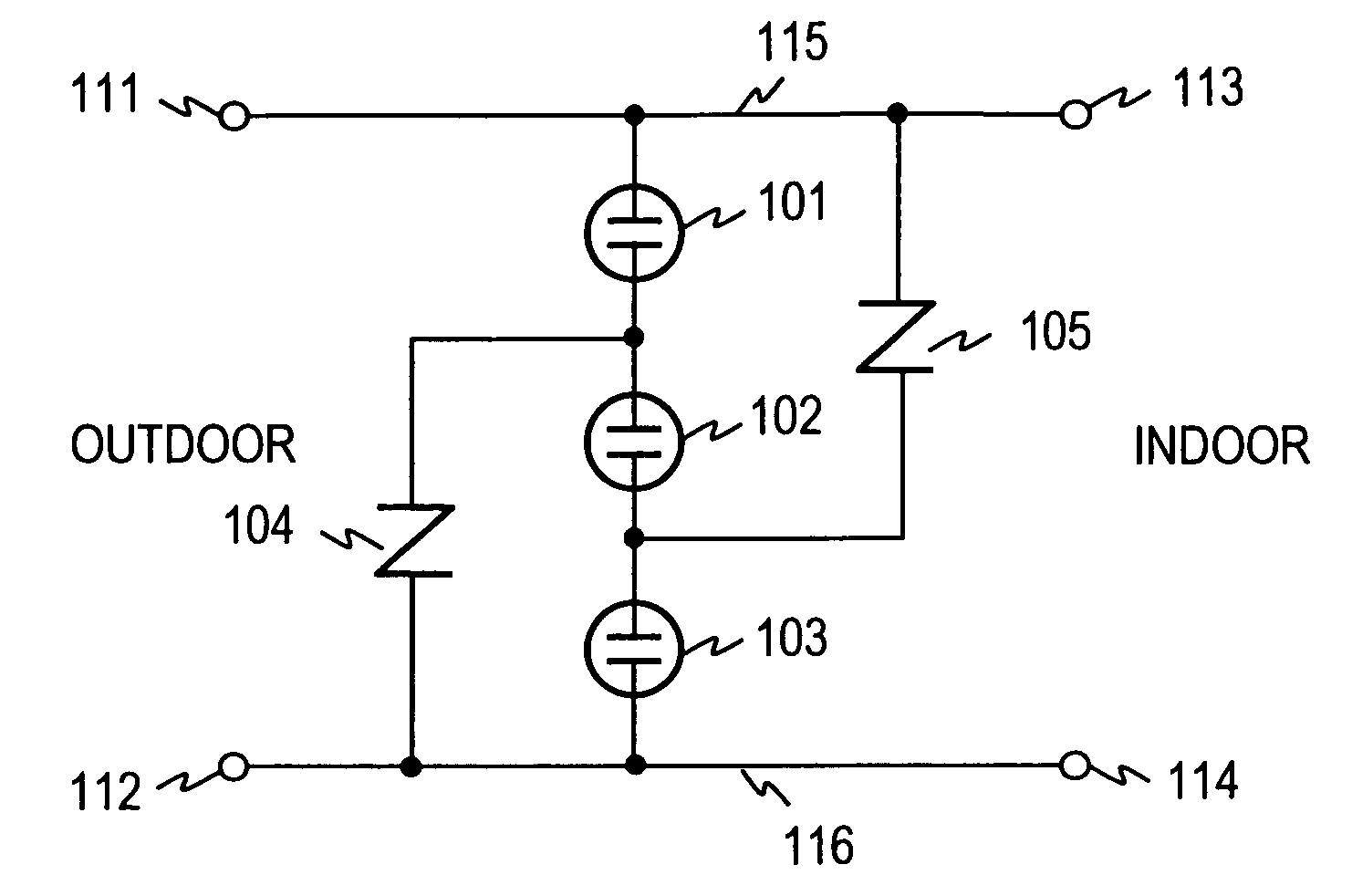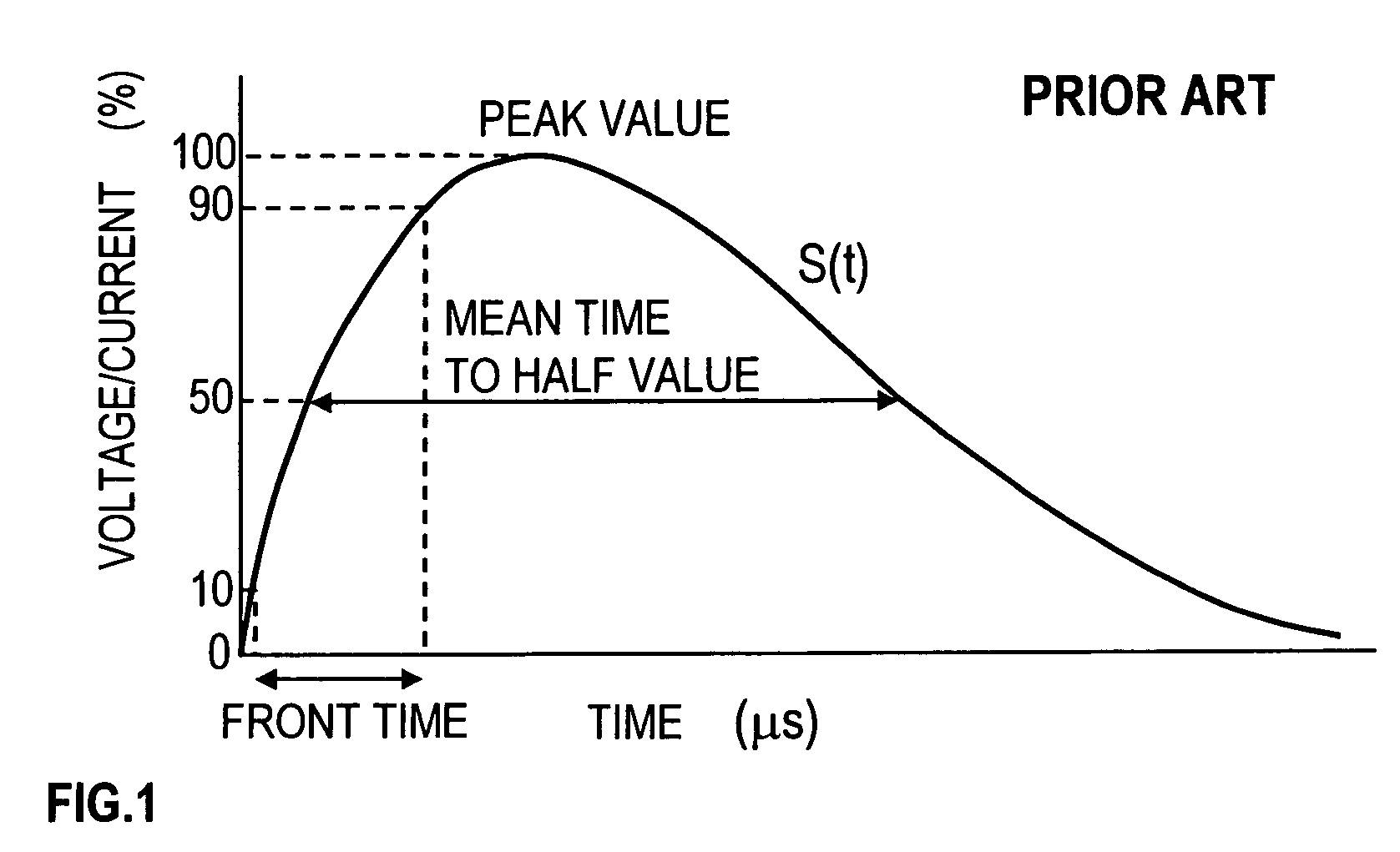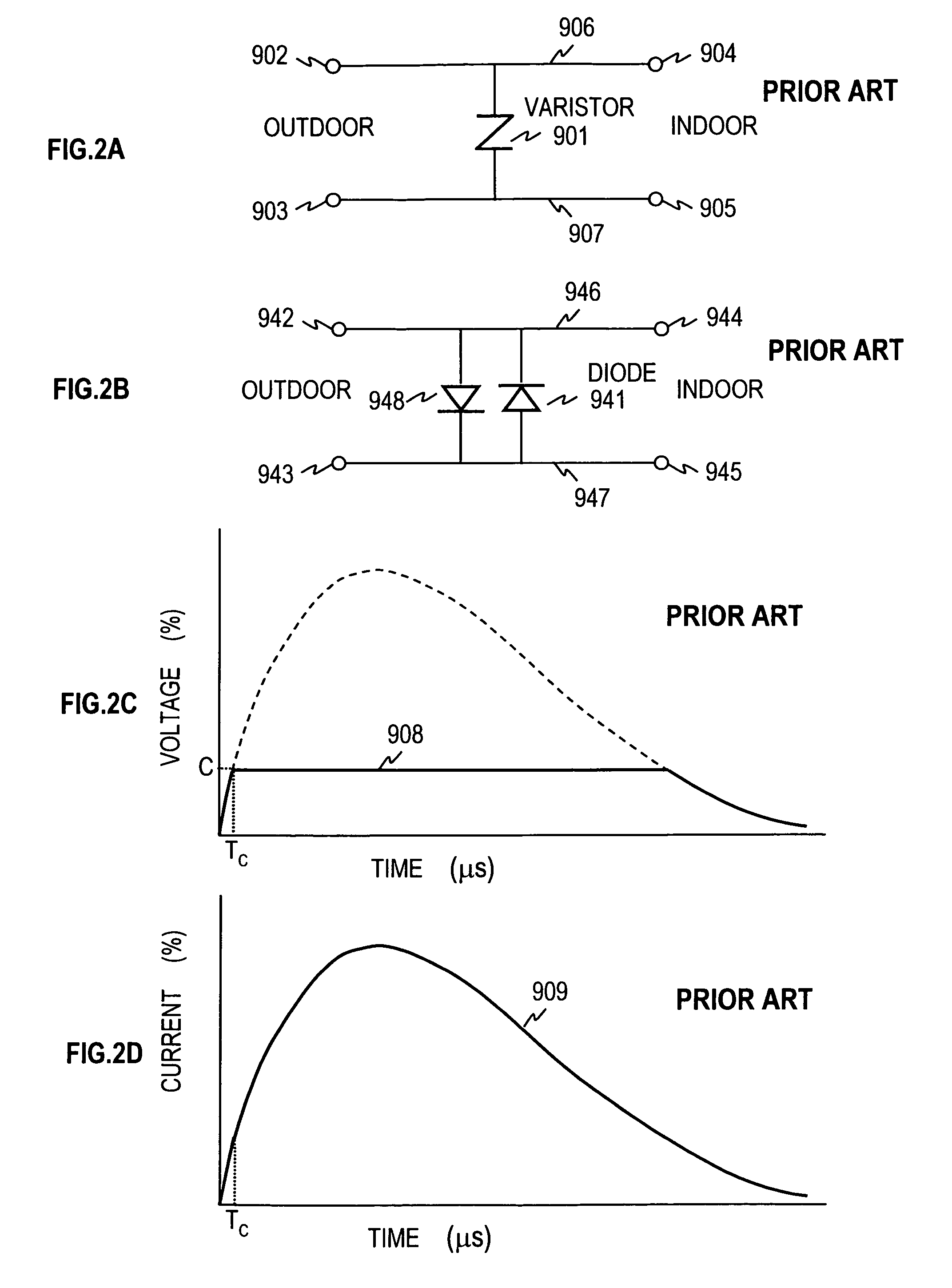Overvoltage protective device and method of overvoltage protection
a protective device and overvoltage protection technology, applied in the direction of overvoltage protection resistors, emergency protective arrangements for limiting excess voltage/current, spark gap details, etc., can solve the problems of voltage drop, the degree of balance between the two conductors may be deteriorated, so as to reduce the size and cost, the effect of easy improvement of symmetry
- Summary
- Abstract
- Description
- Claims
- Application Information
AI Technical Summary
Benefits of technology
Problems solved by technology
Method used
Image
Examples
first embodiment
[0049]FIG. 8 shows a configuration of an overvoltage protective device according to First Embodiment of the present invention. In the overvoltage protective device, three discharge units 101, 102 and 103, and two varistors 104 and 105 are used. As shown in FIG. 8, the three discharge units 101, 102 and 103 are connected in series between two conductors 115 and 116. The varistor 104 is connected in parallel to the two discharge units 102 and 103, excluding the discharge unit 101. The varistor 105 is connected in parallel to the two discharge units 101 and 102, excluding the discharge unit 103. Here, the operating voltage of the discharge unit 102 is set lower than a voltage obtained by subtracting the spark-over voltage of the discharge unit 103 from the operating voltage of the varistor 104, and lower than a voltage obtained by subtracting the spark-over voltage of the discharge unit 101 from the operating voltage of the varistor 105, and at the same time higher than the operating v...
second embodiment
[0074]In the present embodiment, there is described a configuration of an overvoltage protective device implementing the method of overvoltage protection described in First Embodiment. FIG. 19 shows a configuration of an overvoltage protective device 200. The overvoltage protective device 200 has four external terminals 201, 202, 203 and 204. The external terminals 201 and 202 are connected to the outdoor side conductors, and the external terminals 203 and 204 are connected to the indoor side (the apparatus side to be protected).
[Variation 1]
[0075]FIG. 20 shows a variation of overvoltage protective device. According to the present variation, the overvoltage protective device 210 has four external terminals 211, 212, 213 and 214. The external terminals 211 and 214 are connected to one conductor 115, and the external terminals 212 and 213 are connected to the other conductor 116.
[Variation 2]
[0076]FIG. 21 shows another variation of overvoltage protective device. According to the prese...
PUM
 Login to View More
Login to View More Abstract
Description
Claims
Application Information
 Login to View More
Login to View More - R&D
- Intellectual Property
- Life Sciences
- Materials
- Tech Scout
- Unparalleled Data Quality
- Higher Quality Content
- 60% Fewer Hallucinations
Browse by: Latest US Patents, China's latest patents, Technical Efficacy Thesaurus, Application Domain, Technology Topic, Popular Technical Reports.
© 2025 PatSnap. All rights reserved.Legal|Privacy policy|Modern Slavery Act Transparency Statement|Sitemap|About US| Contact US: help@patsnap.com



